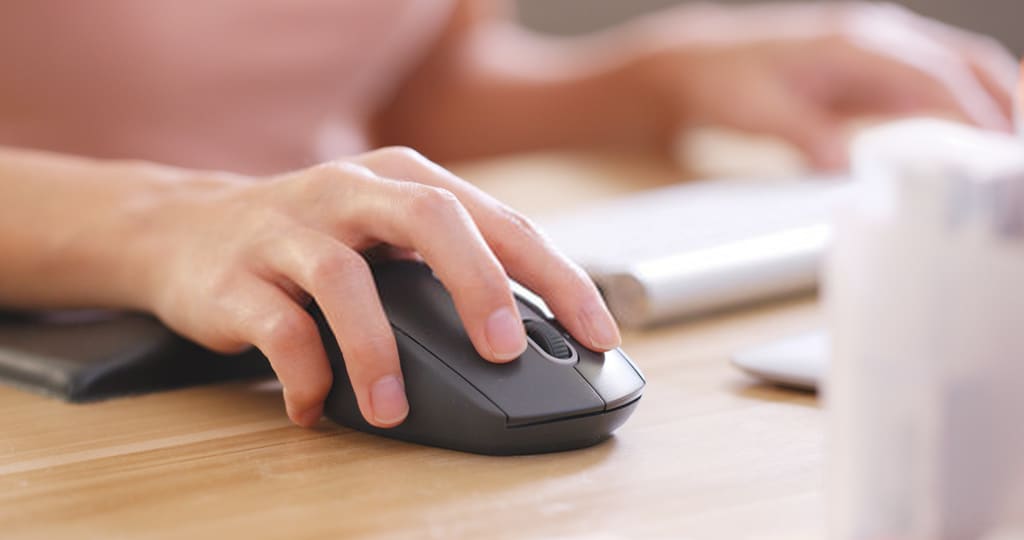Everything about Jitter Clicking
Layman guide to Jitter clicking method to increase your mouse clicking speed.

What is jitter Clicking?
Jitter clicking is an advanced and excellent clicking tactic that can greatly improve your mouse click rate compared to usual clicking. With jitter clicking, users can achieve a high click rate of 10 to 14 CPS.
This technique uses shivers in the arm muscles and wrist, using these vibrations to click the mouse as fast as possible.
This advanced technique does, however, take a little practice. It is therefore important to take the jitter click test and frequently check your progress over time to observe your practice and improvement until you achieve perfection!
Take the jitter click test now to test your jitter click rate.
How to Jitter Click
If you are into PC gaming, then you know that clicking plays a vital role in your daily life. In first-person shooters and Minecraft, clicking fast can get you more hits, and do more harm.
Clicking fast is important for most popular games. Study this article to know how to jitter-click to improve your clicking speed
Step 1
Buy a decent mouse. It doesn't have to be a Razer, Logitech, or SteelSeries, but try not to use a 1980s mouse that's covered in dust. Having decent mouse matters in jitter-clicking.
Step 2
Tense your hand. When you jitter-click, your hand is primarily vibrating but hard adequate to click the mouse. You want your finger to touch the left click button, but your wrist to be lifted off of the mouse slightly. It cannot be in a carefree position. Make sure to take breaks often.
Step 3
Make sure your arm isn't slouched. Make sure that it is also slightly tensed, and not flat against a surface.
Step 4
Arch your hand. Your hand shouldn't be wrapped all the way around your mouse. Your finger should be hovering over the left click button, and it should be slightly arched. Keep in mind that this can get tiring, and it takes practice to perfect it.
Step 5
Vibrate your hand. Use the muscles in your arm or wrist to vibrate your hand. You may get faster click using your entire arm, but you may get better accuracy using your wrist. Make sure you are not pressing the mouse button to click, but vibrating your hand to click.
Be careful when jitter-clicking. Jitter-clicking can hurt your arm, wrist, hand, and fingers over a long period of time. Try not to jitter for over 15 - 30 seconds. It can seriously damage your hand. Stretch your arms and fingers after practicing.
Try using two fingers to jitter-click. Sometimes you can improve your speed using your index finger and middle finger, or even your index finger and thumb. This may cost you accuracy though.
Try removing your pinky from the mouse to increase your speed.
Step 6
Do online click tests to test your clicking speed. There are lots of websites on the internet that will test your clicking speed. The average click speed is about 6 clicks per second (CPS).
A fast clicker can click at about 9-12 clicks per second. The succeeding is some websites you can use to test your clicking speed:
Step 7
Keep practicing, this may take time to get good at. Use click speed testers, and try jitter-clicking in-game. Whenever you have an unplugged mouse, try jittering for a couple of seconds at a time. Ultimately, it will become natural. If you succeed, then you should get around 7-9. If you become a master, you might reach 12 cps. Good Luck!
Is jitter clicking dangerous?
While clicking games are gaining trend, players shouldn't leverage any of the techniques more aggressively. Reportedly, players tend to raise the risk of physical injuries. Some even state that using the method continuously can even cause arthritis over the long run. Beyond Jitter Clicking, the other choices also such as Drag and Butterfly clicking both can cause arthritis due to friction in the joints.
It is safe to practice any of the tactics mentioned above, just a few times a day, but one should not try to master the skill aggressively to avoid physical injury. One of the conventional medical difficulties that arise due to Jitter Clicking is Carpal Tunneling. It is a condition that causes numbness and pain in the arm.
The main reason for the condition is because the median nerve of the hand gets compressed. Most superior clickers are aware of the condition even if there is little or no evidence to prove that Jitter Clicking causes such physical injuries.
Other Alternatives to Jitter Clicking Method
Although Jitter Clicking is the fastest clicking method, considering the difficulty and physical strain included, you can choose Drag Clicking or Butterfly Clicking.
Butterfly Clicking
The butterfly clicking technique is simpler and can even give you more clicks per second depending on how skillfully you do it.
In this technique, you have to use two-finger instead of just the index finger. You can click the same button with two fingers alternatively and get twice the number of clicks as compared to regular clicking. It works just like the ‘butterfly’ flutters its wings, hence the name!
Drag Clicking
Another alternative to Jitter Click is Drag Clicking. This takes advantage of the friction between the mouse button and the fingertip.
With Drag clicking, you can register more than 100 clicks in just a couple of seconds.
All you have to do is to drag your finger from the top of the arch of the mouse button and go towards the edge. The dispute between the surface makes it button to register multiple clicks while you drag your finger.
But, keep in my mind that it is quite difficult to aim using the Drag clicking technique.
How fast can you jitter click?
For a person you practice jitter click, it is easy to get 9-12 clicks per second. In special cases, it can go as high as 15 CPS.
Does Jitter clicking break your mouse?
No, it does not break the mouse but it significantly reduces the life of your mouse.
About the Creator
Penelope Curtis
Passionate Gaming Geek Love To Write About Games & Technlogy. Follow My Blog Latest Technlogy News and Trends.






Comments
There are no comments for this story
Be the first to respond and start the conversation.